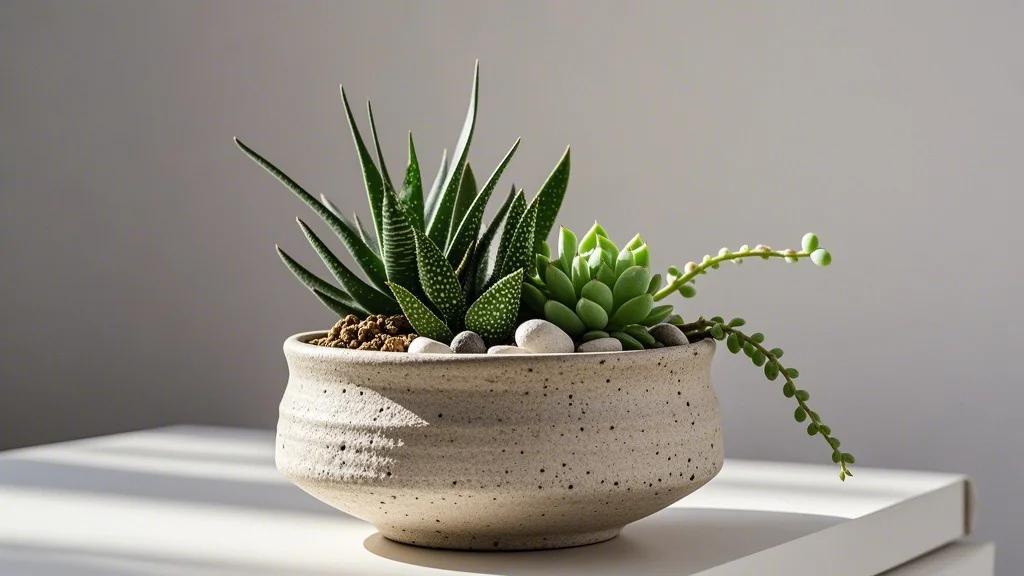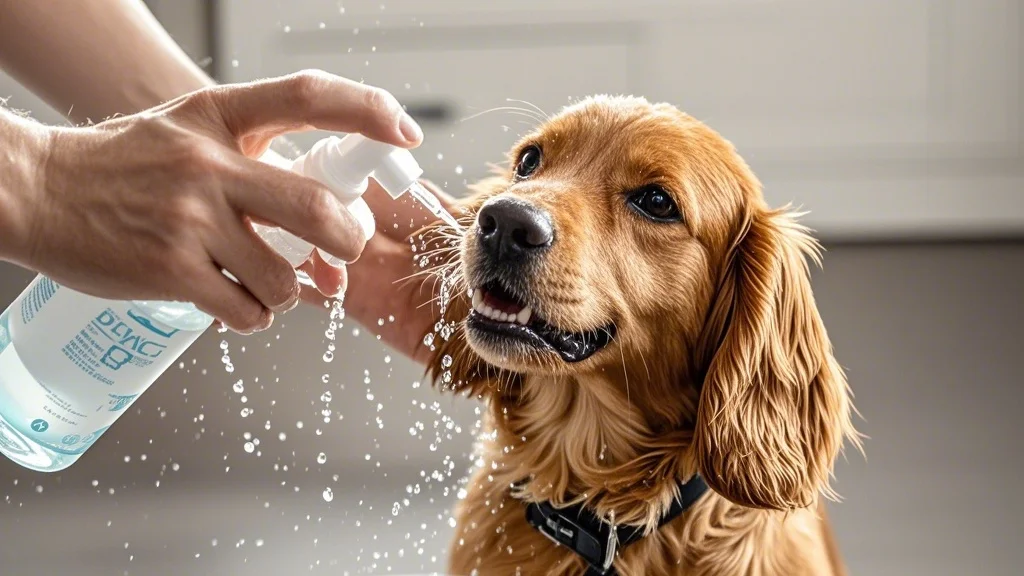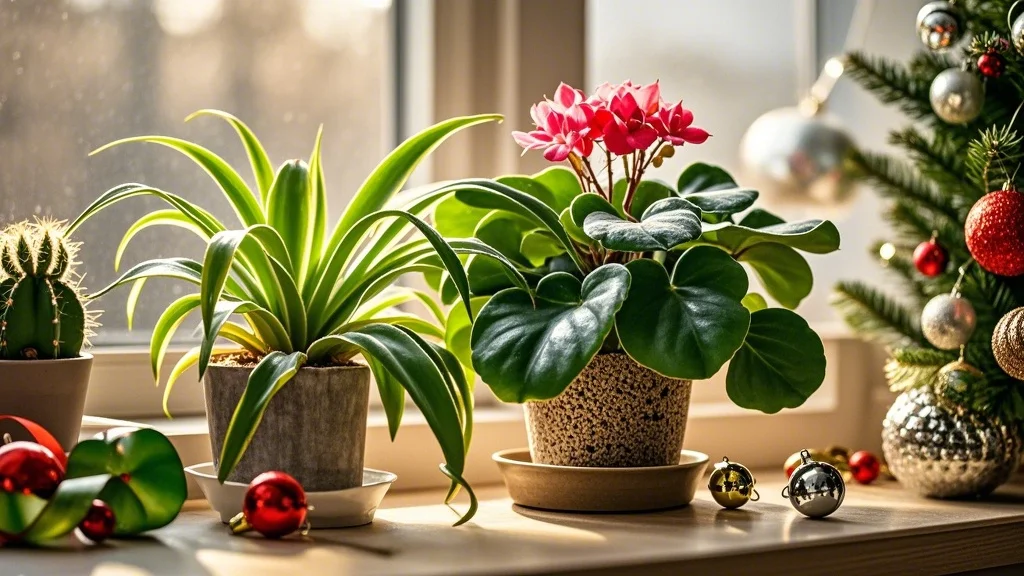For pet owners who are also plant enthusiasts, finding the perfect balance between greenery and pet safety can be challenging. Curious cats and dogs often see houseplants as toys, snacks, or digging opportunities, which can lead to damaged plants and potentially dangerous situations for your furry friends. Hanging plants offer an elegant solution, keeping your botanical beauties safely elevated while adding vertical interest to your living space.
This guide explores the best pet-safe hanging plants and practical ways to display them in your home, ensuring both your plants and pets can coexist harmoniously in urban environments.
Contents
- 1 Why Choose Hanging Plants When You Have Pets
- 2 Pet-Safe Hanging Plant Options
- 3 Creative Hanging Solutions for Pet Owners
- 4 Practical Tips for Pet-Proofing Your Hanging Plants
- 5 Seasonal Considerations for Hanging Plants
- 6 Creating a Cohesive Hanging Garden Display
- 7 Conclusion
- 8 Resources for Pet Owners
Why Choose Hanging Plants When You Have Pets
Hanging plants solve multiple challenges for pet owners:
- Safety first: Elevating plants keeps potentially toxic varieties out of reach
- Space optimization: Perfect for small urban apartments where floor space is limited
- Protection from curious paws: Prevents soil digging, leaf chewing, and plant toppling
- Visual interest: Creates dynamic vertical layers in your home décor
- Reduced allergens: Keeps plant debris contained and away from pet areas
Pet-Safe Hanging Plant Options
Spider Plant (Chlorophytum comosum)
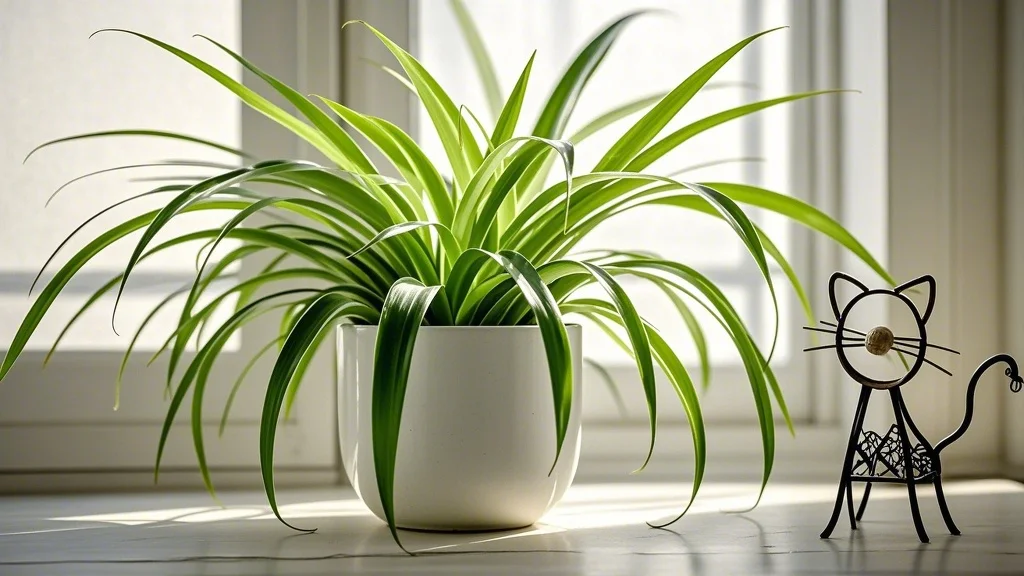
Spider plants are among the most forgiving and pet-friendly hanging options available. Their arching variegated leaves create a dramatic cascade, and they produce numerous “spiderettes” that dangle from the mother plant.
Care requirements:
- Light: Bright indirect light
- Water: Allow soil to dry between waterings
- Humidity: Adaptable to average home humidity
- Special features: Air-purifying qualities and easy propagation
Why it works for pet owners: While technically non-toxic, spider plants can have a mild hallucinogenic effect on cats (similar to catnip), so hanging them keeps them safe from feline nibbling while allowing you to enjoy their air-purifying benefits.
Boston Fern (Nephrolepis exaltata)
With their lush, feathery fronds, Boston ferns add a touch of woodland charm to any space. Their full, rounded shape makes them perfect candidates for hanging baskets.
Care requirements:
- Light: Medium to bright indirect light
- Water: Keep consistently moist
- Humidity: High humidity preferred
- Special features: Excellent air purifier
Why it works for pet owners: Completely non-toxic to both cats and dogs, Boston ferns are safe even if your pet manages to reach a fallen frond. Their preference for humidity makes them perfect for bathroom hanging arrangements, typically away from pet traffic.
Peperomia Varieties
These compact, colorful plants come in numerous varieties with different leaf patterns and textures. Trailing types like Peperomia prostrata (String of Turtles) work beautifully in hanging planters.
Care requirements:
- Light: Medium to bright indirect light
- Water: Allow to dry out between waterings
- Humidity: Average to high
- Special features: Compact growth and interesting foliage
Why it works for pet owners: All peperomia varieties are non-toxic to pets, making them worry-free options even if a leaf occasionally falls within reach.
Air Plants (Tillandsia)
These soilless wonders can be displayed in hanging glass globes or specialized air plant holders for a modern, minimalist look.
Care requirements:
- Light: Bright indirect light
- Water: Soak weekly, mist between soakings
- Humidity: Appreciate higher humidity
- Special features: No soil needed
Why it works for pet owners: With no soil to dig in and non-toxic properties, air plants are ideal for pet households. Their unique display options also add interesting visual elements to your space.
Prayer Plant (Maranta leuconeura)
Known for their dramatic leaf movements (they fold up at night like hands in prayer), these colorful plants add visual interest with their boldly patterned leaves.
Care requirements:
- Light: Medium indirect light
- Water: Keep consistently moist
- Humidity: High humidity preferred
- Special features: Unique daily leaf movements
Why it works for pet owners: Non-toxic to pets and visually striking, prayer plants make excellent hanging specimens that won’t harm curious animals.
Swedish Ivy (Plectranthus verticillatus)
Despite its name, Swedish ivy isn’t actually an ivy at all, but a trailing plant with scalloped, glossy leaves that cascade beautifully from hanging baskets.
Care requirements:
- Light: Medium to bright indirect light
- Water: Allow top inch of soil to dry between waterings
- Humidity: Adaptable to average home conditions
- Special features: Fast-growing and easy to propagate
Why it works for pet owners: Non-toxic and resilient, Swedish ivy can withstand the occasional interaction with pets while remaining safe if curious mouths take a nibble.
Lipstick Plant (Aeschynanthus radicans)
Named for their bright red tubular flowers that resemble lipstick emerging from a tube, these plants add a pop of color to hanging displays.
Care requirements:
- Light: Bright indirect light
- Water: Allow top inch to dry between waterings
- Humidity: Moderate to high
- Special features: Unique flowering pattern
Why it works for pet owners: Non-toxic and typically flowering above the main foliage, lipstick plants keep their most interesting features safely displayed away from pet reach.
Creative Hanging Solutions for Pet Owners
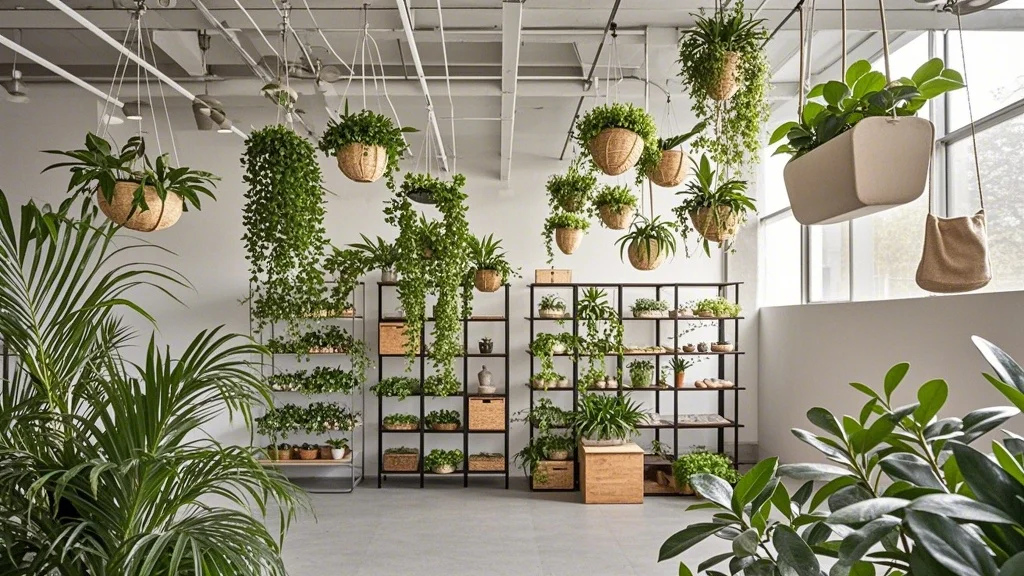
Macramé Plant Hangers
The revival of macramé has brought beautiful handcrafted options for displaying plants:
- Adjustable height options: Choose longer designs for higher ceilings
- Material considerations: Cotton rope is pet-safe and washable
- Style variations: From simple to elaborate bohemian designs
- DIY potential: Many beginner-friendly patterns available online
Window Plant Shelves
For those with limited ceiling options:
- Tension rod systems: No drilling required, perfect for renters
- Suction cup shelves: Great for smaller plants in bright windows
- Multi-tiered options: Maximize vertical space with staggered displays
- Custom corner shelves: Utilize often-overlooked window corner spaces
Ceiling-Mounted Plant Systems
For serious plant collectors:
- Pulley systems: Allow for easy lowering of plants for watering
- Track systems: Install along ceiling perimeters for flexible arrangements
- Hanging plant “curtains”: Create living room dividers with multiple hanging plants
- Suspended plant ladders: Horizontal ladders hung from ceiling create multiple hanging points
Wall-Mounted Options
When ceiling hanging isn’t possible:
- Floating wall shelves: Position high on walls, out of pet reach
- Wall plant pockets: Fabric or rigid options for smaller plants
- Vertical garden panels: Create living walls above pet access areas
- Repurposed wall items: Converted spice racks, wine racks, or ladder shelves
Practical Tips for Pet-Proofing Your Hanging Plants
Secure Installation
- Use appropriate anchors: Ensure ceiling hooks are installed in studs or use toggle bolts
- Weight considerations: Account for plant weight when fully watered
- Regular inspection: Check hanging hardware periodically for wear
- Backup safety measures: Consider secondary support systems for valuable plants
Watering Solutions
- Self-watering options: Reduce maintenance and prevent overwatering mess
- Drip trays: Prevent water damage to floors below
- Watering tools: Long-spout watering cans or plant misters for easy access
- Watering schedule: Create a routine to avoid forgetting elevated plants
Preventing Fallen Debris
- Regular pruning: Remove dead leaves before they fall
- Catch systems: Use decorative fabric under plants to catch soil or leaves
- Proper potting: Ensure plants are securely potted to prevent soil spillage
- Pet-safe mulch options: If soil exposure is unavoidable, use pet-friendly coverings
Training Your Pets
- Positive reinforcement: Reward pets for ignoring plants
- Deterrent options: Pet-safe bitter sprays for lower portions of hanging plants
- Alternative attractions: Provide pet-safe grasses or herbs for cats to nibble
- Gradual introduction: Slowly introduce new plants to gauge pet interest
Seasonal Considerations for Hanging Plants
Winter Care
- Light changes: Adjust positions as seasonal light shifts
- Heating concerns: Keep plants away from heating vents
- Humidity challenges: Consider humidifiers during dry winter months
- Temperature fluctuations: Protect from cold drafts near windows
Summer Adjustments
- Increased growth: Be prepared for more frequent pruning
- Watering frequency: Adjust for warmer temperatures
- Vacation planning: Set up self-watering systems when away
- Pest management: Monitor for increased pest activity in warmer months
Creating a Cohesive Hanging Garden Display
Design Principles
- Varying heights: Create visual interest with plants at different levels
- Complementary containers: Choose pots that enhance your décor
- Color coordination: Select plants with colors that complement your space
- Texture variety: Mix different leaf shapes and plant forms
Styling for Small Spaces
- Corner maximization: Utilize often-overlooked corners for plant displays
- Window treatments: Incorporate plants into curtain rods or blinds
- Bathroom potential: Utilize shower curtain rods for humidity-loving plants
- Kitchen opportunities: Hang herbs near windows for practical beauty
Conclusion
Creating a pet-friendly plant haven doesn’t mean sacrificing your botanical ambitions. With thoughtful selection of non-toxic species and creative hanging solutions, you can cultivate a thriving indoor garden that remains safely beyond the reach of curious paws and mouths. The vertical dimension offers endless possibilities for urban gardeners with pets, transforming potential conflicts into harmonious coexistence.
By elevating your plants, you’re not just protecting them from pet interference—you’re also creating a more dynamic, visually interesting living space that maximizes your available square footage. Whether you’re a cat parent, dog owner, or guardian to other curious creatures, hanging plants provide the perfect compromise between your plant passion and pet responsibilities.
Resources for Pet Owners
- ASPCA Toxic Plants Database: Comprehensive list of plants toxic to pets
- Local plant nurseries: Staff can often advise on pet-safe options
- Veterinary consultation: When in doubt, consult your vet about specific plant safety
- Online plant communities: Connect with other pet-owning plant enthusiasts for tested solutions
Remember that even with non-toxic plants, it’s best to discourage pets from making houseplants part of their diet. The hanging approach offers the best of both worlds—beautiful greenery for you and safety for your beloved animals.

